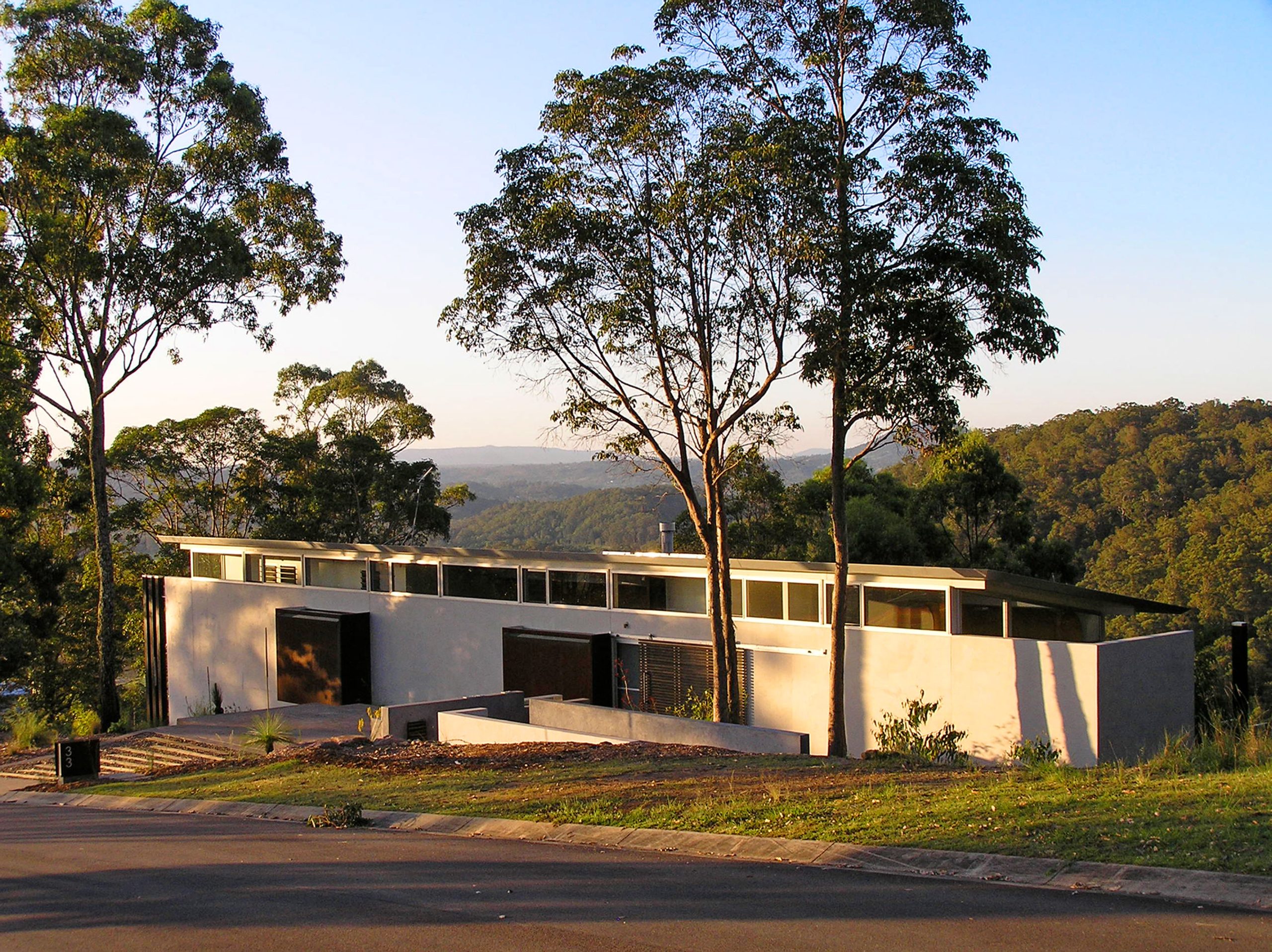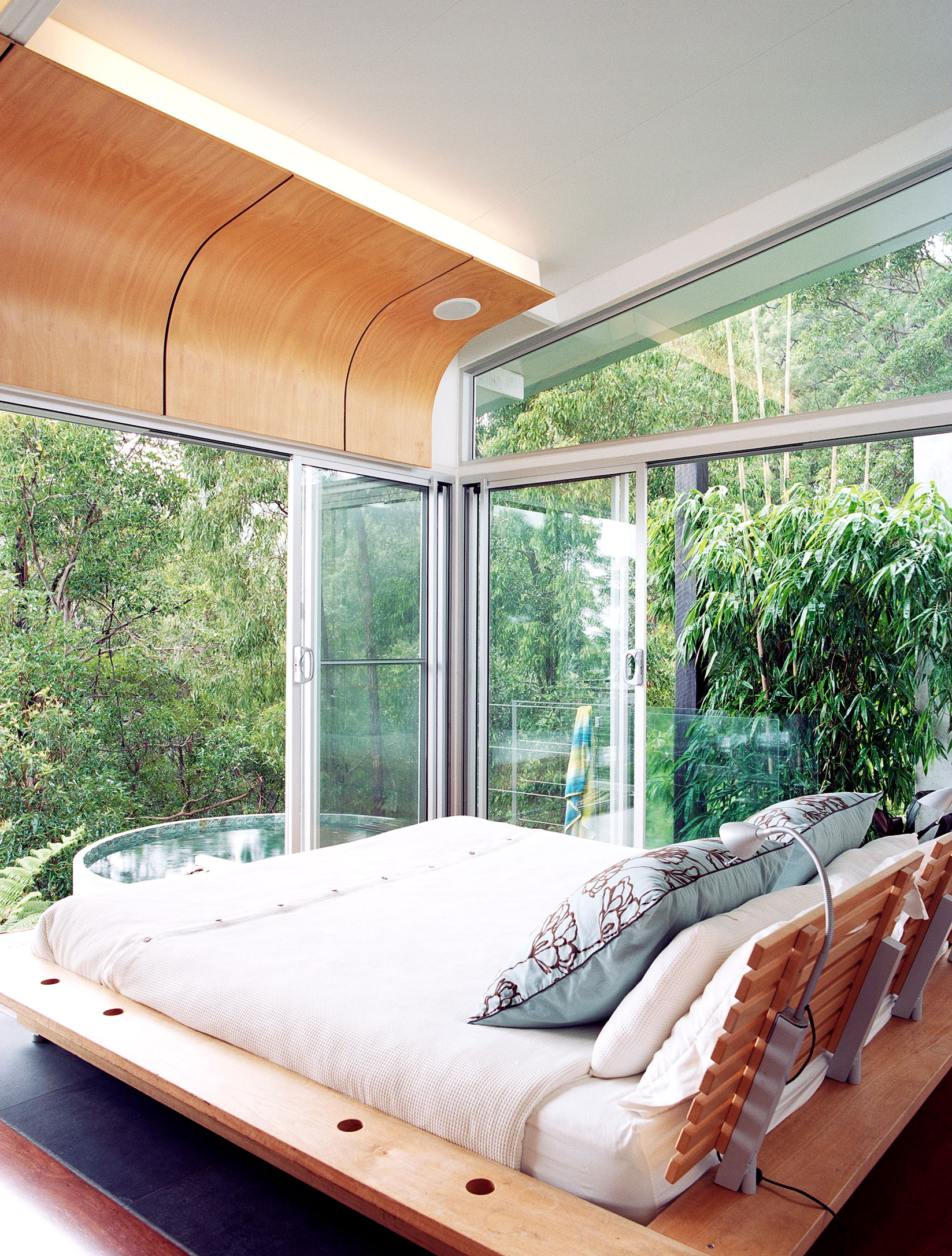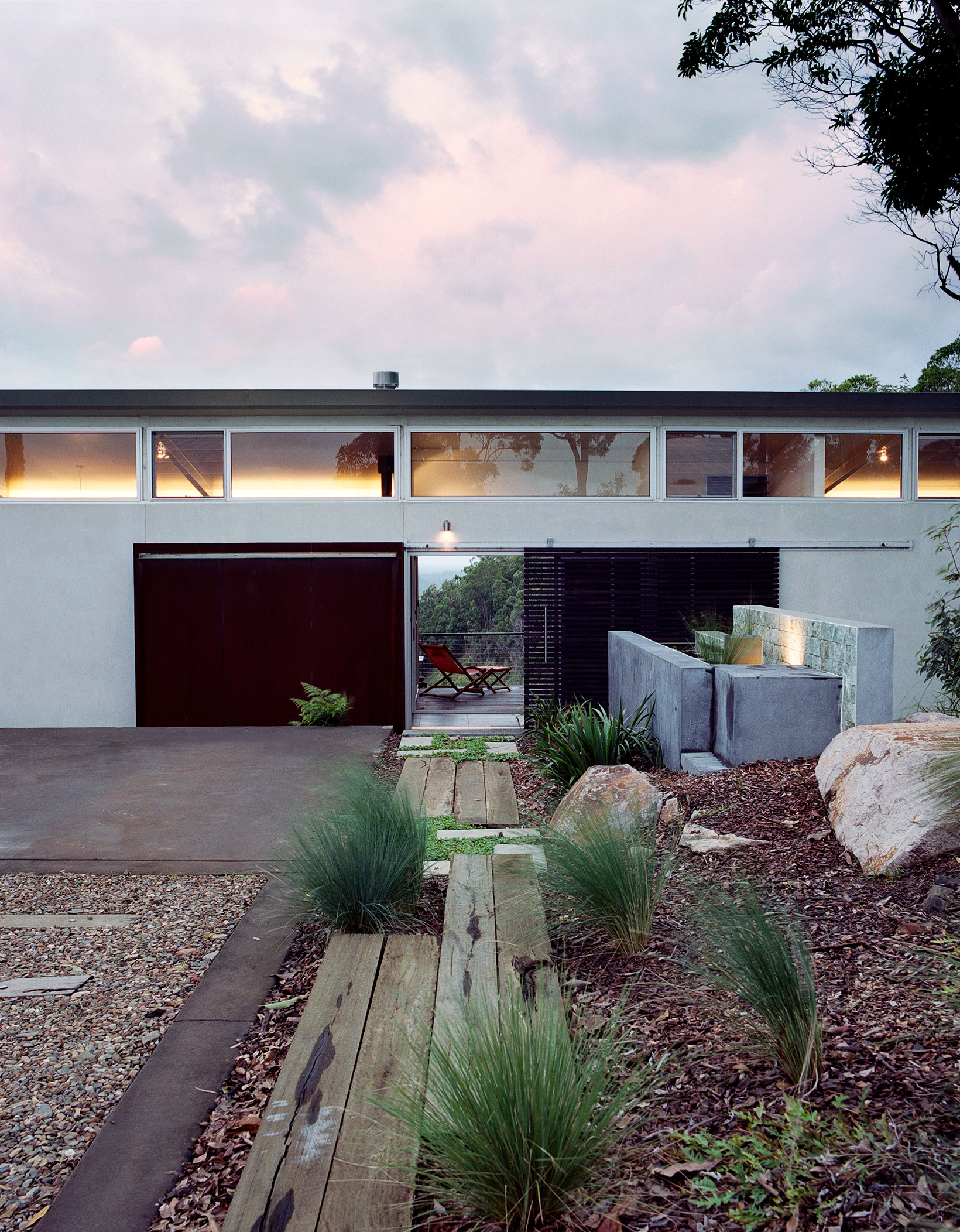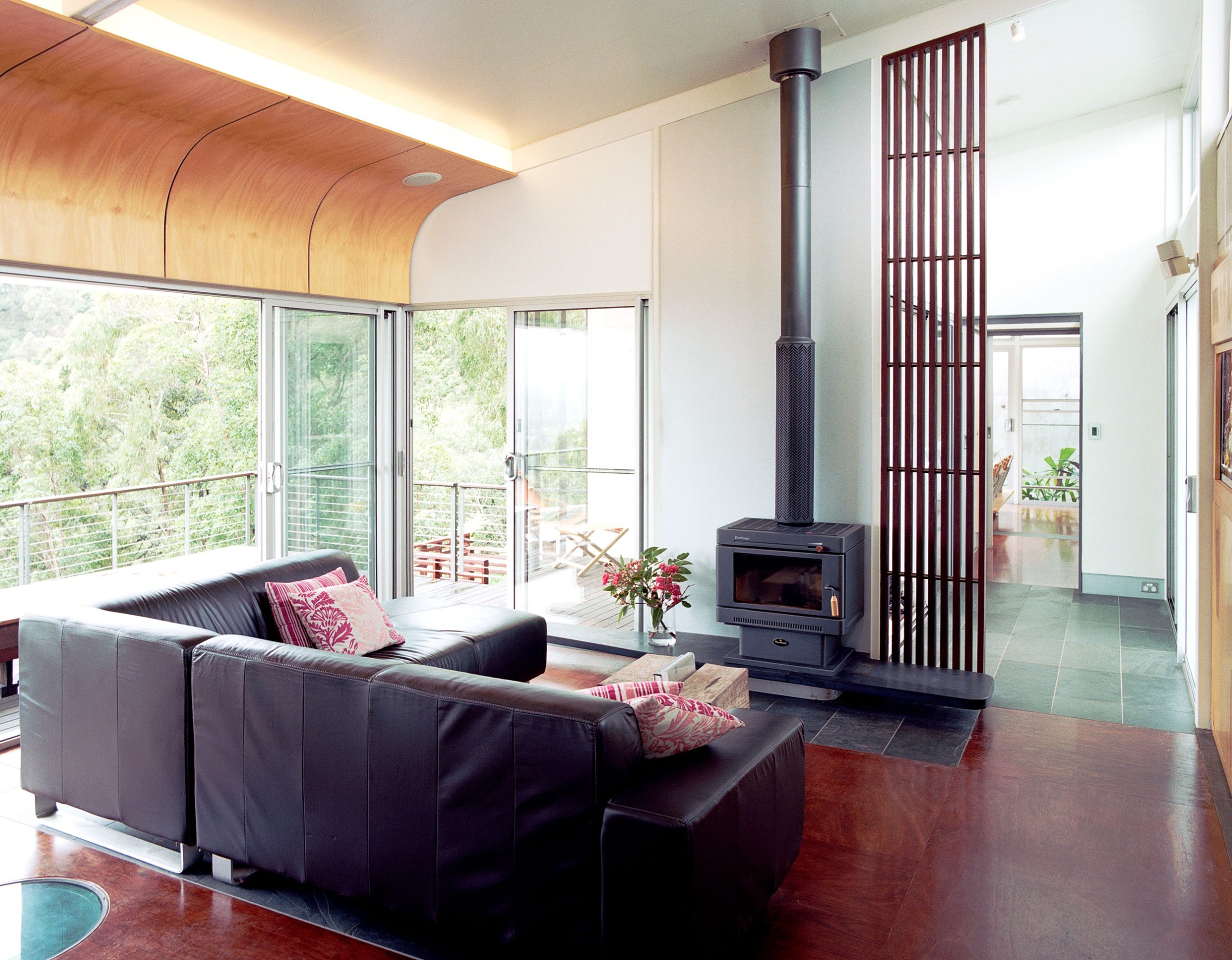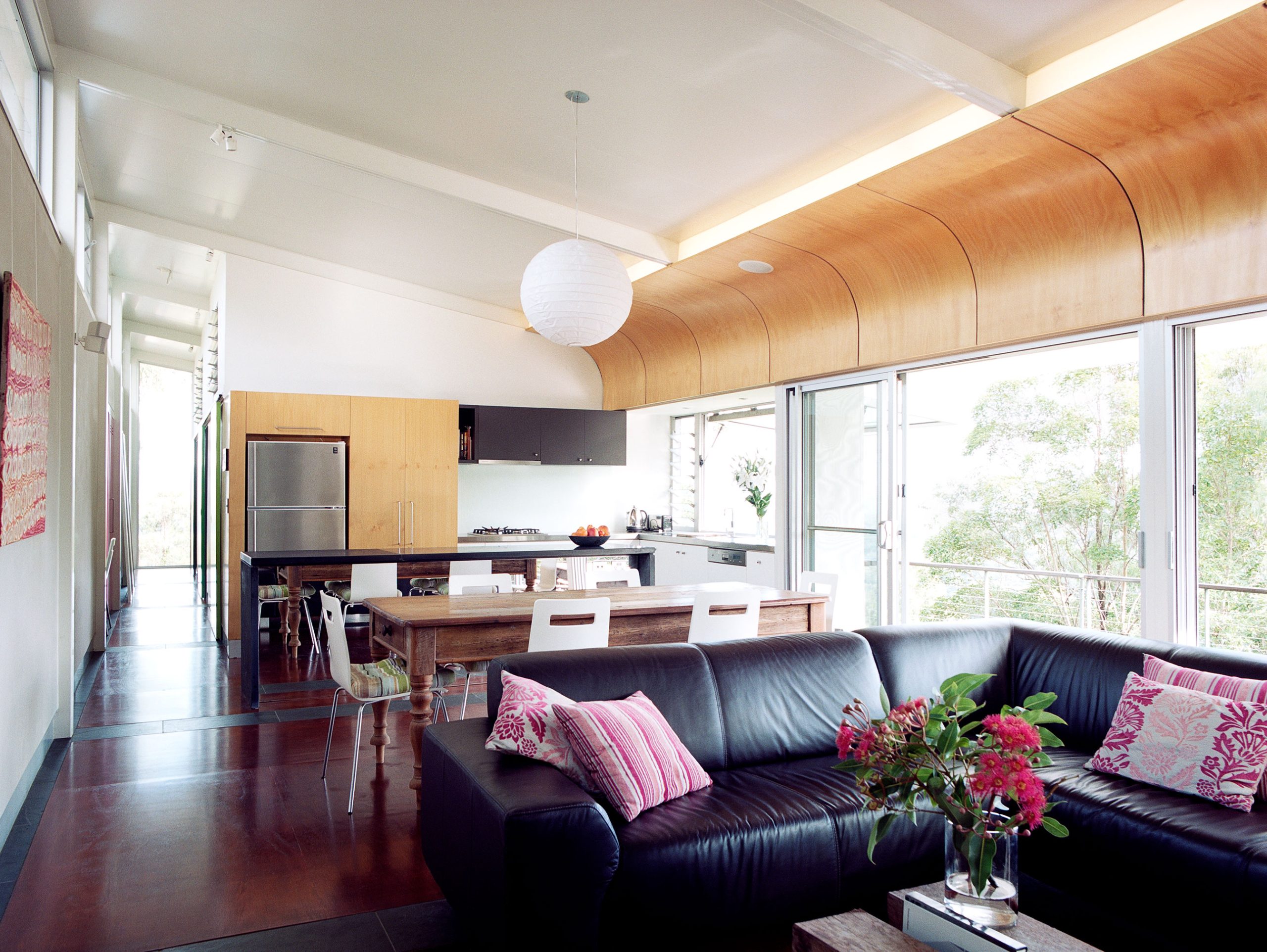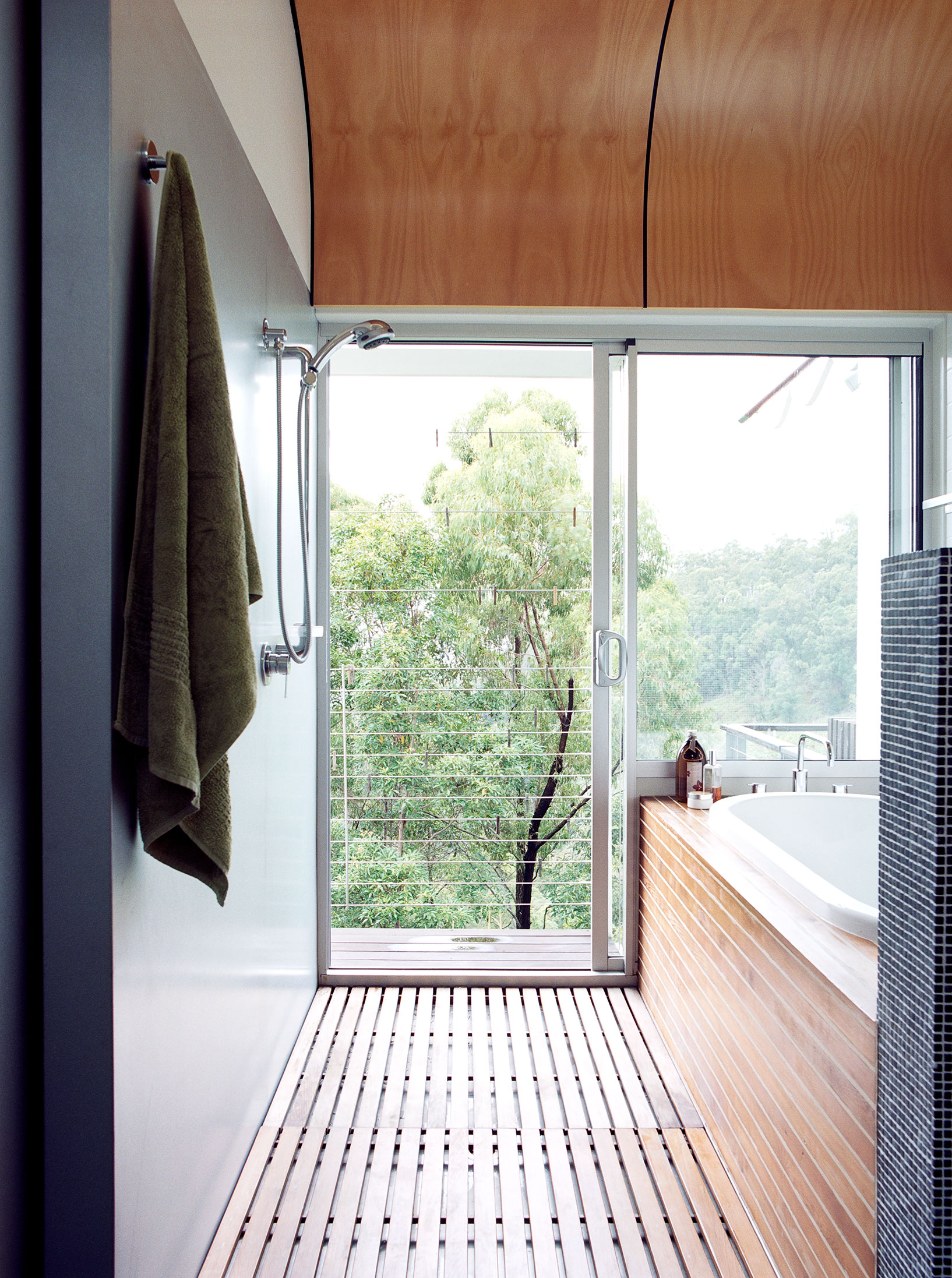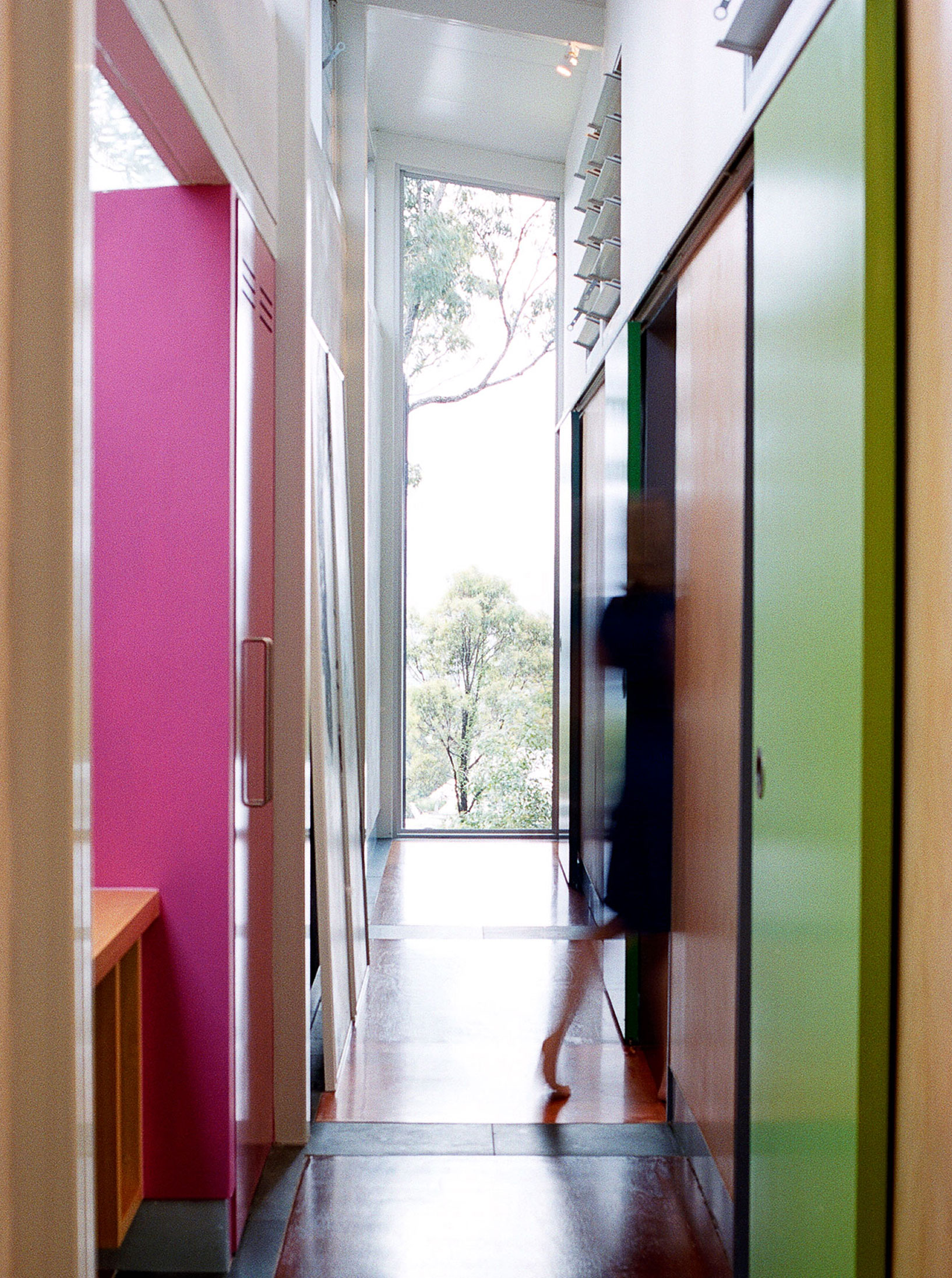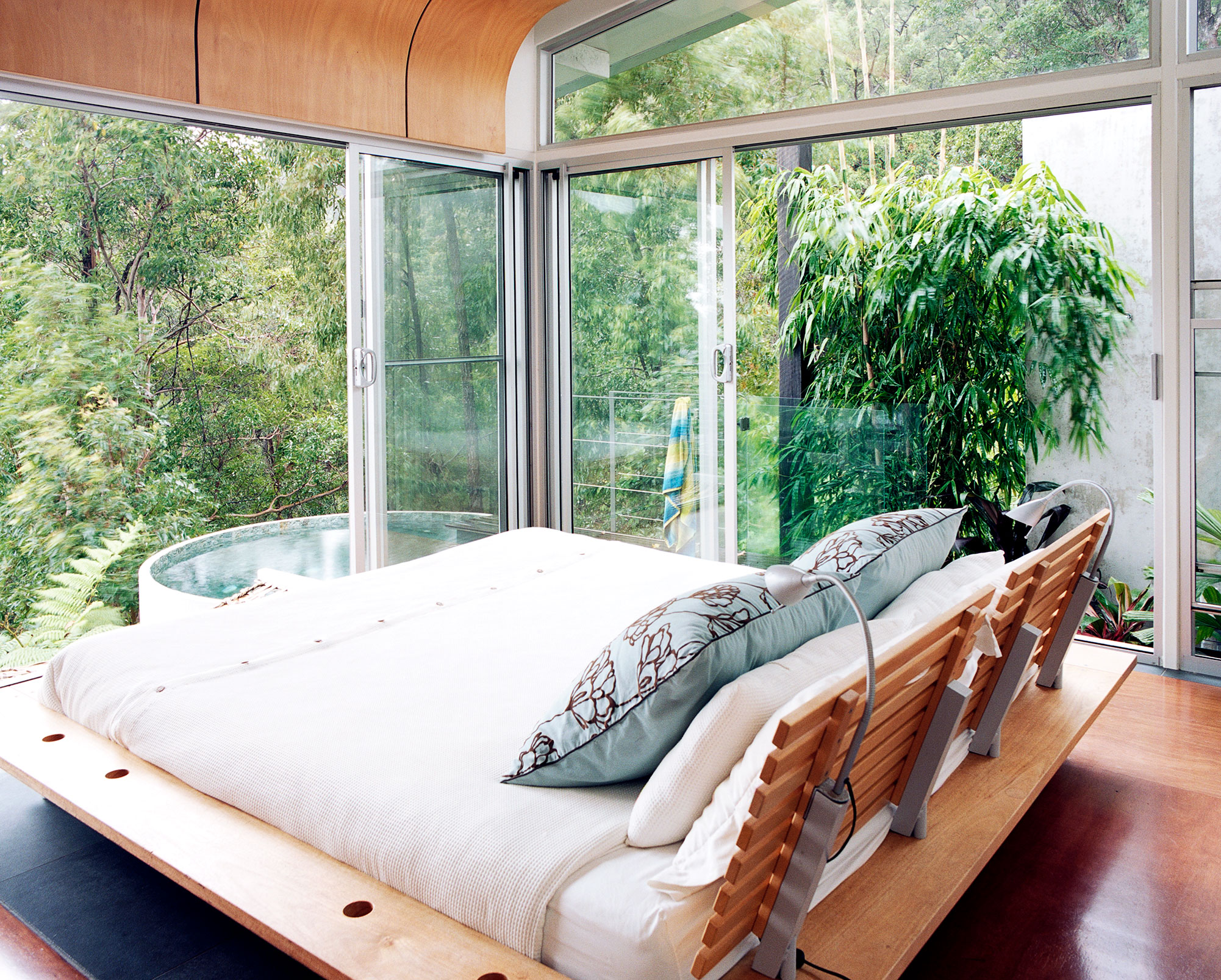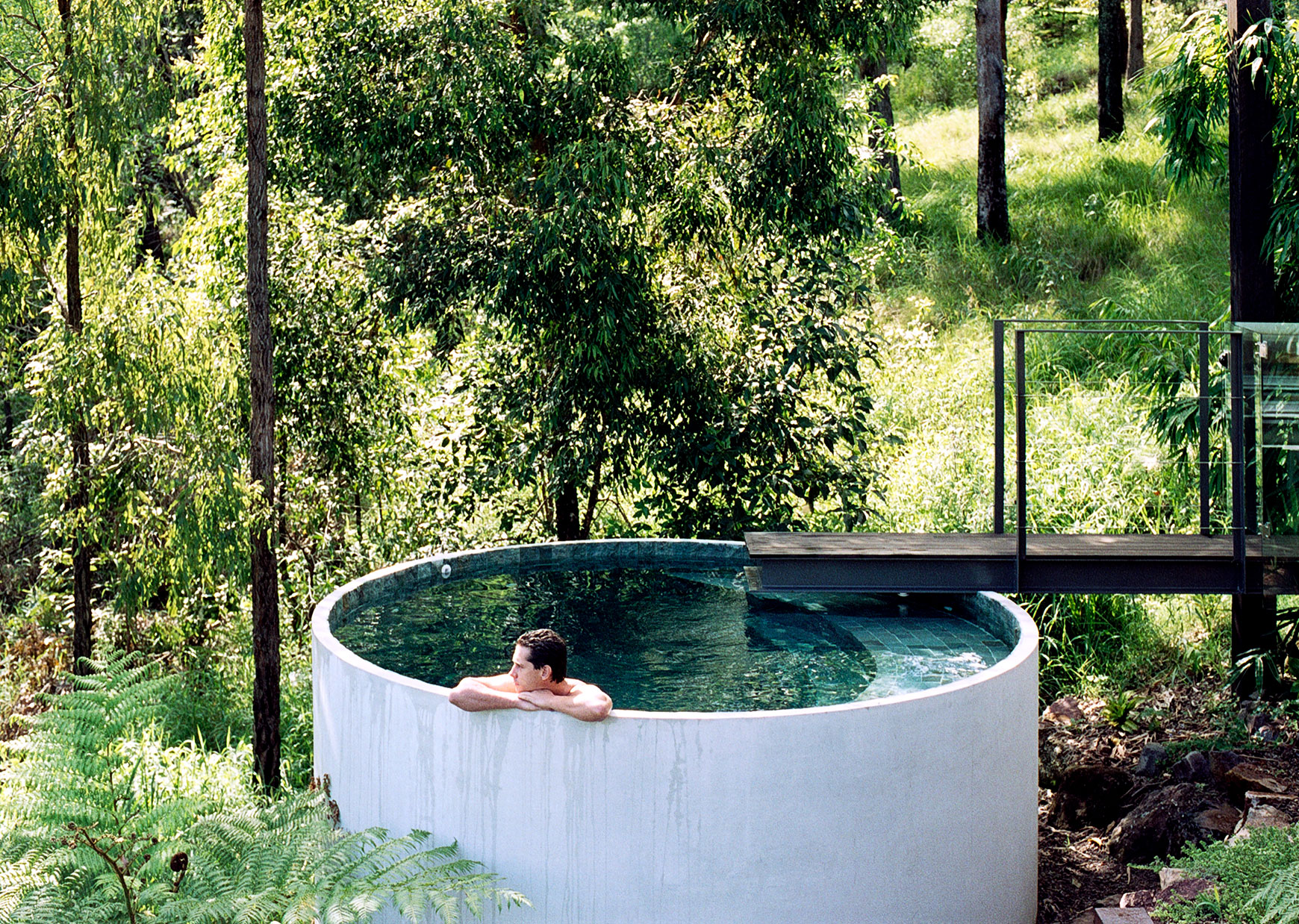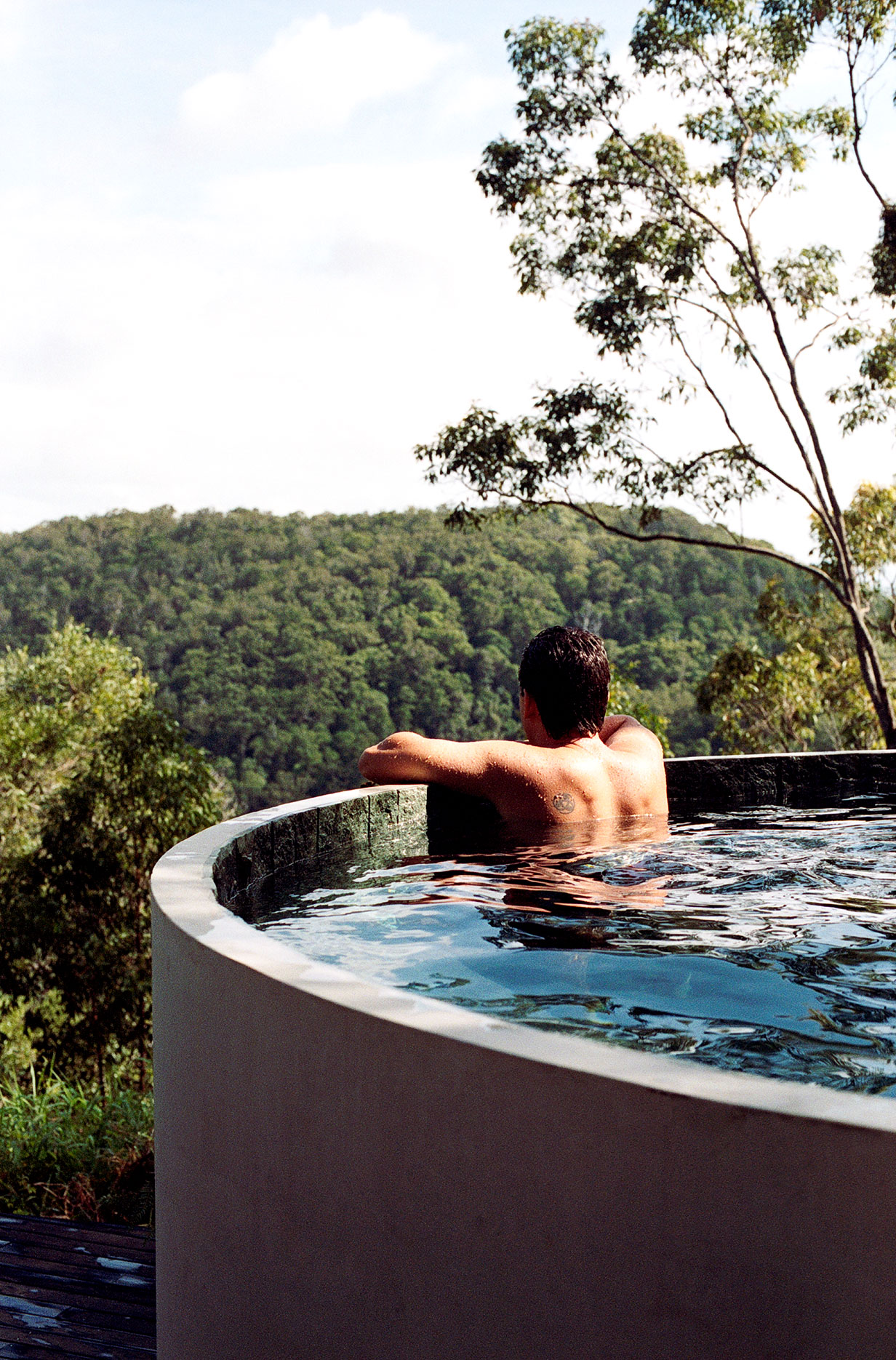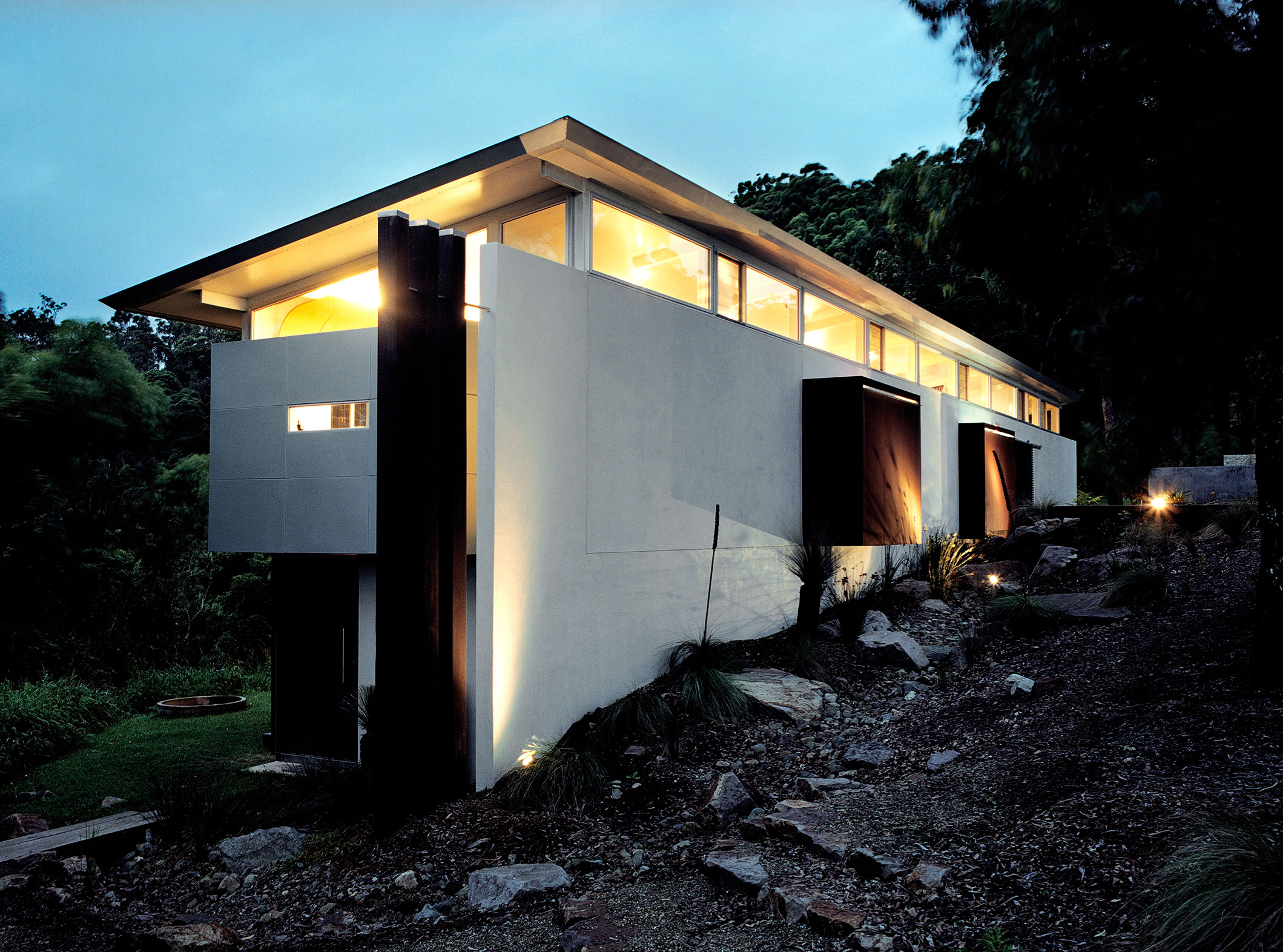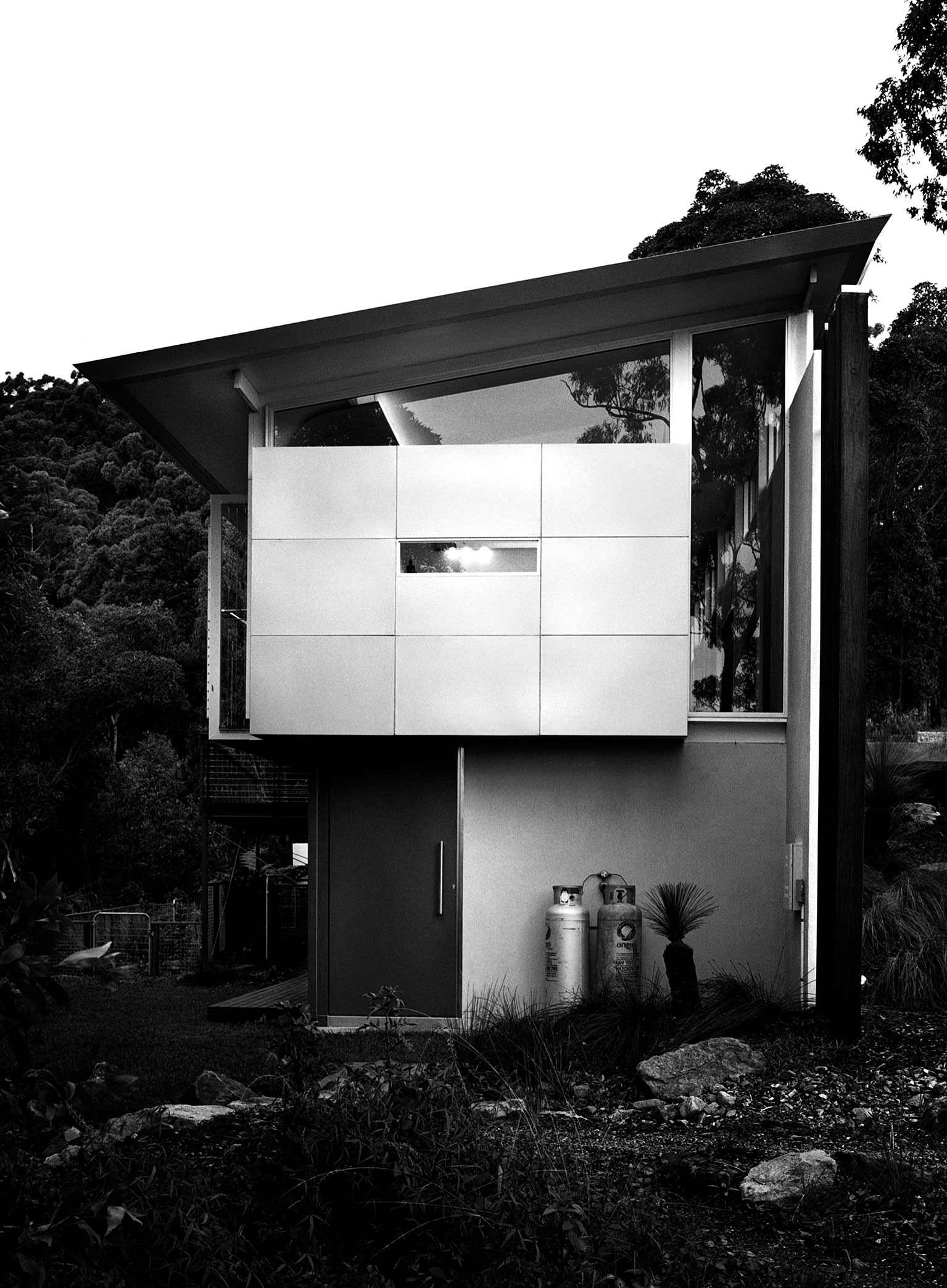The house, was conceived as an opportunity to explore ideas of sustainable design and living within a modest budget.
The building is sited on the north west spur of Mt Ninderry, facing north with views through a saddle to Noosa North Shore and Double Island Point. A lineal plan was adopted to run along the contours, easing construction on a steep and challenging site. This, in conjunction with the buildings single room width, allows all spaces to benefit from winter sun and northerly views.
The entry to the building is essentially a hole in a long wall which slides through the landscape running east west. The house is a simple box which ‘hangs’ off the northern side of this wall. The entry forms a breezeway to the house which funnels north easterly breezes down the length of the building. It also allows for a separation of the master bedroom from living spaces and other bedrooms, providing privacy in a small home. A self contained unit and studio makes use of under-croft space that results from a need to excavate the site for rainwater storage.
The building is constructed of 9 prefabricated modules which sit on steel columns to the north and a block wall to the south. This large degree of prefabrication maximizes material and labour efficiencies. A curved plywood bulkhead runs the length of the building, serving as an electrical services duct and incorporating pelmets for blinds and fluorescent lighting.‘Solarspan’ roofing panels were incorporated to eliminated the need for secondary and tertiary roof framing. Deep eaves to the north are designed to accommodate winter and summer sun preferences. Lightweight removable canvas awnings are also incorporated for summer months.
Structural glass portholes  to the floors of the living area and bathroom allow access to the rainwater tanks. These can be lit up at night with a small reticulation pump providing delicate movements of light to the ceilings. The precast concrete rainwater tanks  provide thermal massing with the walls of the tank being incorporated into the studio, ensuite and cellar spaces to the lower floor. A fourth precast tank is utilised as a ‘plunge pool’. The underside of modules floor framing is sheeted with ‘Air-cell’ thermal insulation. The southern wall of the building consists of ‘˜ExinTex’ board over the framed insulated walls of the module. This aligns with the block wall of the lower level allowing for a continuous face of concrete render to unify the prefabricated and site built elements of the building . An array of photovoltaic panels will be positioned on the carport roof to service the buildings energy requirements.
The building is compact with a small footprint yet can cater for a full sized family and work from home situations, addressing both environmental and social sustainability issues.

